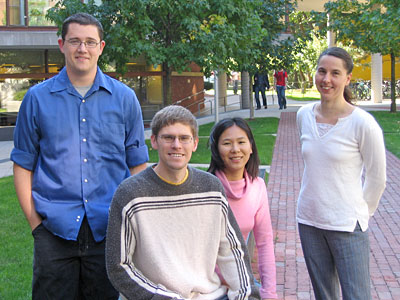Authors Ian Errin-O’Connell, Eik Procko, Sze-Ling Ng and Rachelle Gaudet
In nearly all human cells, TAP, the ABC Transporter associated with Antigen Processing, transports small antigen peptides across membranes so that they can be presented to the immune system, which uses the peptides to monitor the cell content for defects or pathogens. TAP is therefore very important in fighting viral infections, preventing cancer and plays a role in transplant rejection. This paper (E. Procko, I. Ferrin-O’Connell, S.-L. Ng and R. Gaudet. Distinct structural and functional properties of the ATPase sites in an asymmetric ABC transporter. Mol. Cell 2006) describes our latest studies on the structure and function of TAP.
Our experiments looked at the “engine” part of TAP, or nucleotide binding domain, which drives peptide transport. TAP has a pair of similar (but non-identical) nucleotide binding domains, which can be thought of as a two-cylinder engine. These domains bind and hydrolyze ATP, the cellular fuel, to provide energy for peptide transport.
The sequence of TAP is such that one nucleotide binding domain, or “cylinder”, looks normal, whereas the second one looks defective. We were intrigued by this apparent asymmetry, and set out to determine whether the sequence asymmetry translates to asymmetry in function and whether it is important for the transport of peptides by TAP. We found that indeed, one cylinder is defective in structure and hydrolyzes ATP inefficiently. Surprisingly, our experiments further demonstrated that TAP functions best with this configuration of one good and one bad cylinder, where only one cylinder actually drives the transporter.
These findings impact fields beyond TAP and immunology. Many other human transporters from the same family display a similar sequence asymmetry. For example, the transporter mutated in cystic fibrosis patients has a similarly asymmetric “two-cylinder engine”. Furthermore, several similarly asymmetric multidrug resistance proteins, MDR1 and the MRPs, excrete toxins from the liver. Many cancers become resistant to drug therapies by overproducing these MDR and MRP transporters. Our new understanding of the role of asymmetry in the TAP nucleotide binding domains serves as a framework for how all transporters from this family work and how to design better therapies.




